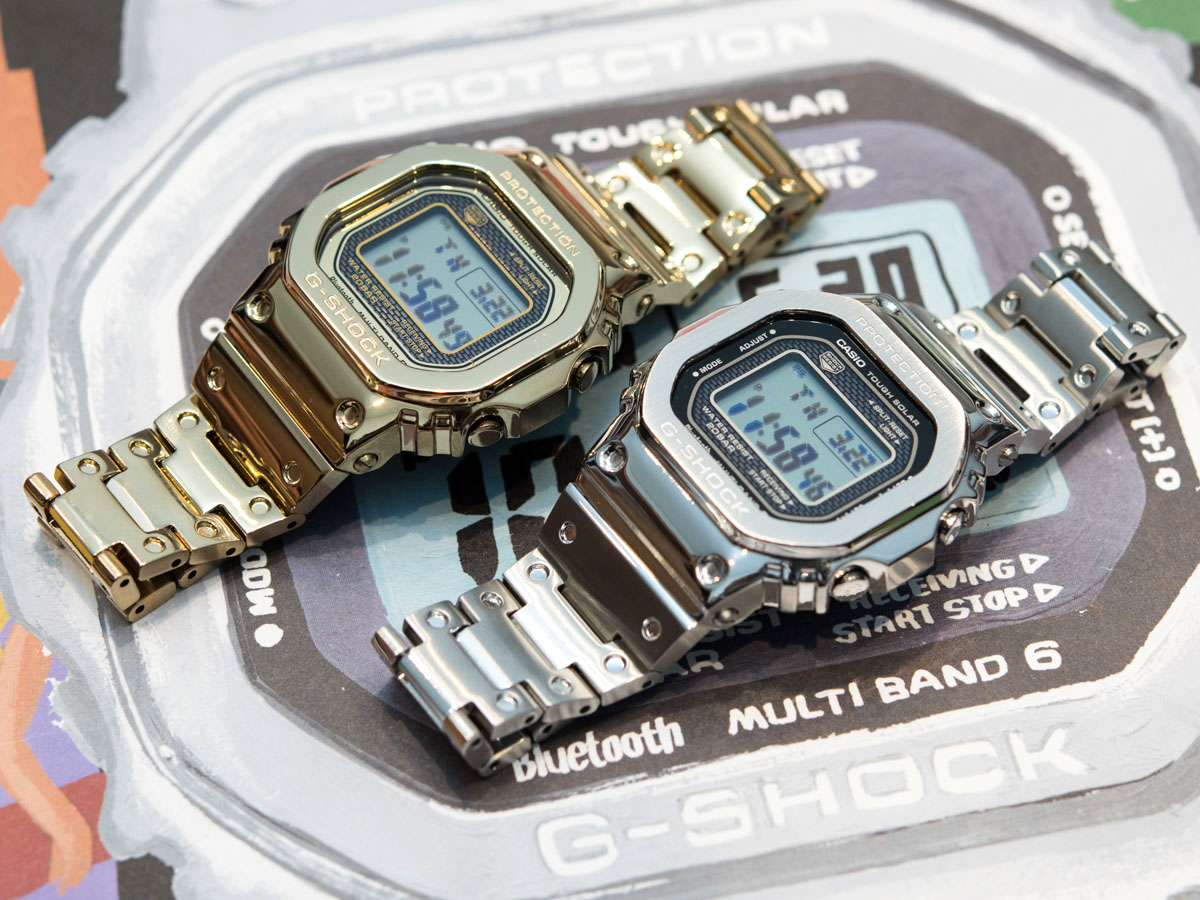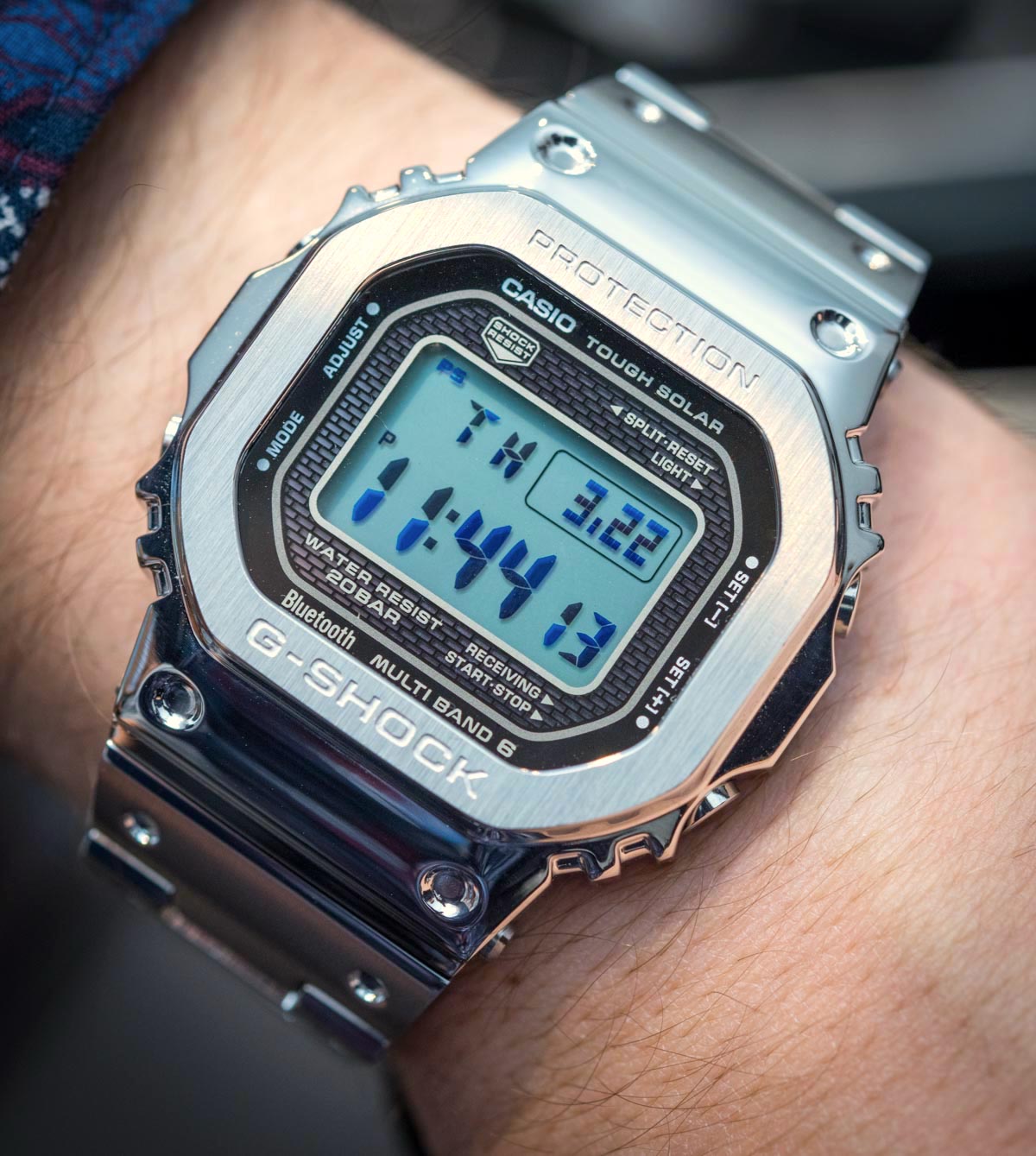
In truth, it feels a bit weird, writing a hands-on with the Casio G-Shock GMW-B 5000 D-1 ‘Full Metal.’ Our news piece on it has been one of the highest trafficked articles recently; that’s statistics testifying to the buzz that an all-metal 5000-Series G-Shock we expected to receive. I was excited to see both the all-steel and the IP Gold variants in the metal (oh yeah!), but I came away wanting more time with them to determine how well they’d fair in real life. I mean, priced at $500 and $600 for steel and gold coated respectively, we are no longer in the super affordable segment usually associated with G-Shocks but are taking on some capable indie and big brand dive and field watches… and so fair well, these two must.
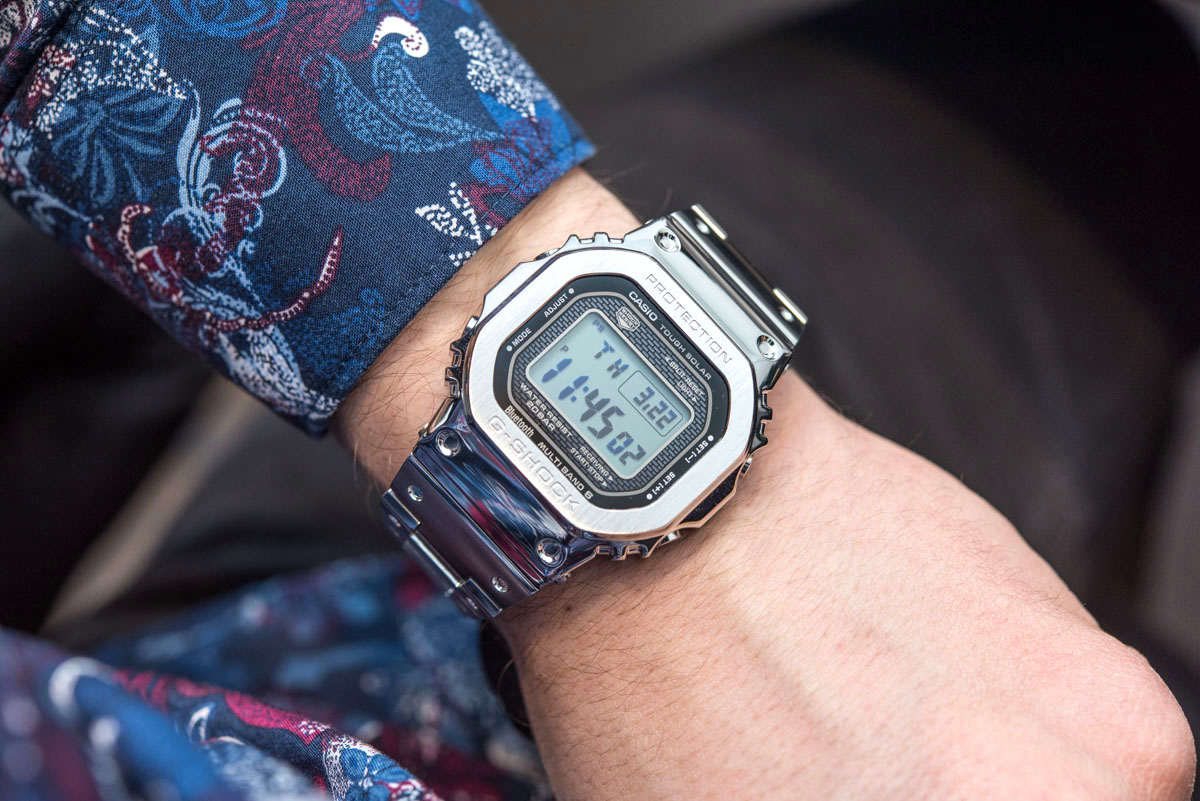
As I said, there are two versions: a full-metal case in steel as the Casio G-Shock GMW-B 5000 D-1 and an IP Gold coated one with the GMW-B 5000 TFG-9. Their internals are exactly the same and neither are said to be limited editions or JDM-only – Casio meant not to upset the larger part of the world this time and is making these two to-be hot sellers available in markets outside Japan. Based on your comments under the news article and on social media, I see there are a few questions frequently associated with an all-metal G-Shock 5000-series. Mainly, these concern wearability and durability, so let’s clear these up now.
During our BaselWorld 2018 meeting with Casio, I asked the kind people from Casio Japan whether these metal-cased watches differed in any way in their durability and/or in-house testing and, to my surprise, they appeared to have been quite shocked by this question… After they realized I did mean it and was looking for a definitive answer, they confirmed that these watches of course receive the same sort of testing and are just as durable as their resin counterparts.
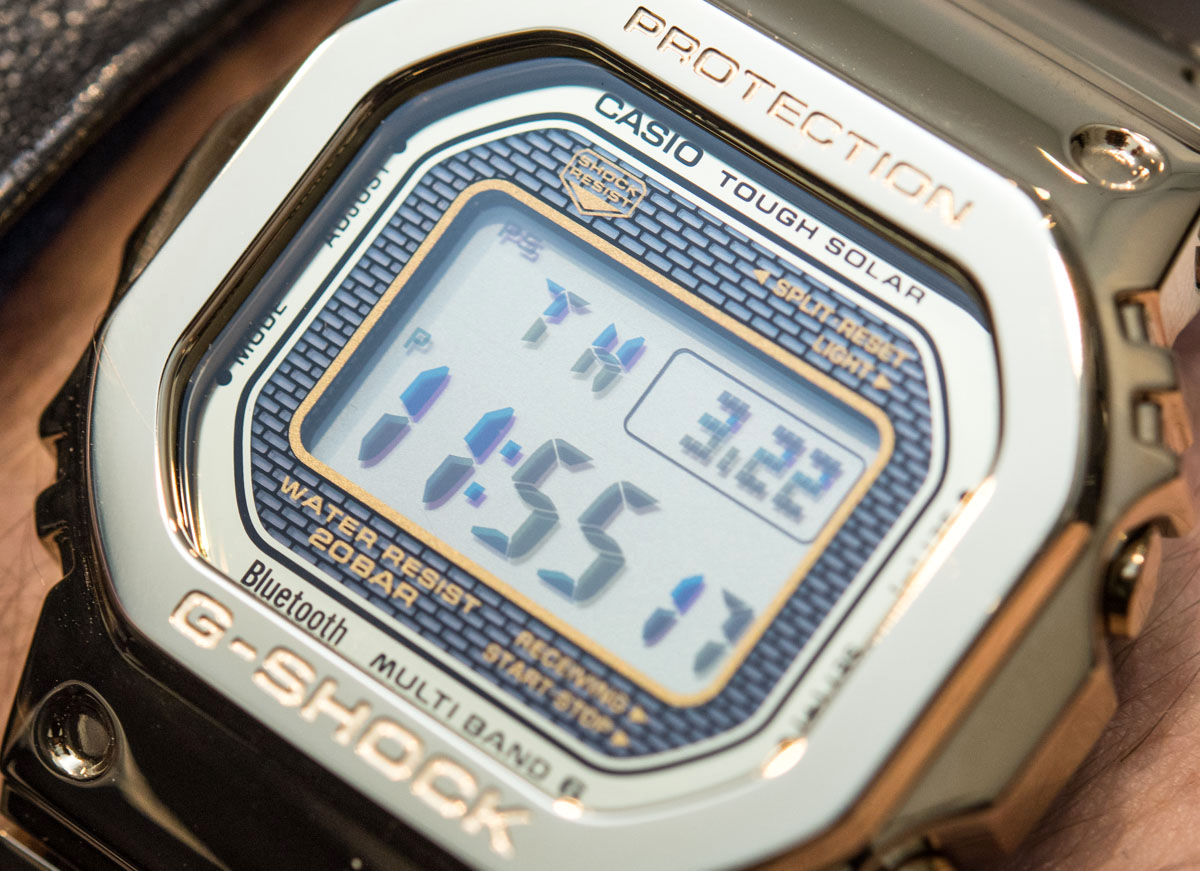
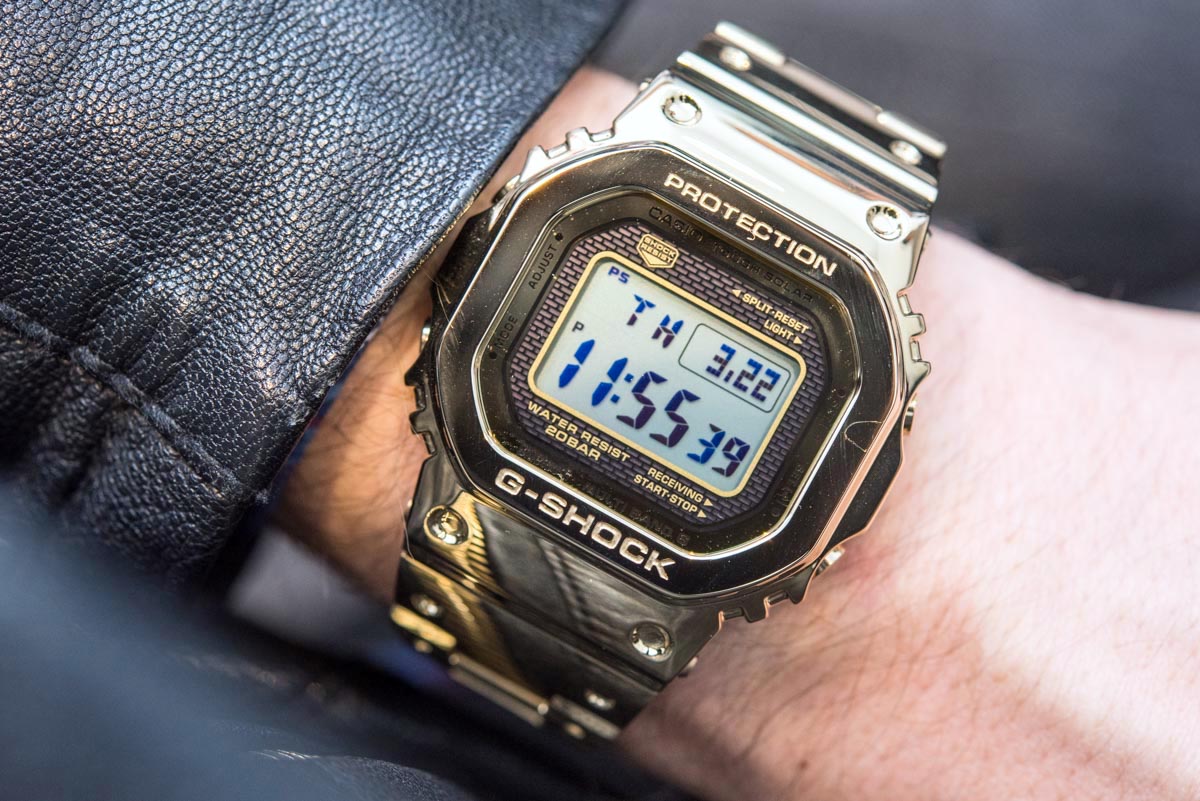
Before we talk looks, wearability, and butchered analogies, let’s look at the impressive tech inside these two 2018 novelties. In short, Casio has thrown the lot at the Full Metal 5000-Series. The awesome Tough Solar technology is there with a cool, Super Mario inspired, brick-like pattern solar panel around the periphery of the screen. Then we have Multi Band 6 for radio controlled, atomic clock accuracy, refreshed up to 6 times per day (5 times per day in China), 300-city world time, 1/100th second chronograph, perpetual calendar, daily alarms, and Bluetooth 4.1 low energy consumption connectivity. This latter is designed to work with Casio’s “G-Shock Connected” app (for iOS and Android) but, notably, this doesn’t turn any of these into a smartwatch, per se. Instead, the communication with the app was designed to enhance the watch’s functionality and accuracy, rather than turn it into a notification delivery machine. A few cool things you can do with the app: you can sync atomic time from your phone, you can set up reminders in the app and have them show up on your watch – including specific texts shown in the circled part in the top right segment of the screen, such as “Birthday 01.01” and it will spell that out in that little window at the pre-set time. You can also use your watch to help the app log your progress – press the correct button in the right mode on the watch and the app will take that as a cue and log your position and time on your phone (but not on your watch). While I’m looking forward to testing this – especially since with Tough Solar and Bluetooth 4.1 the watch won’t require charging – I don’t think I’ll be using these often.
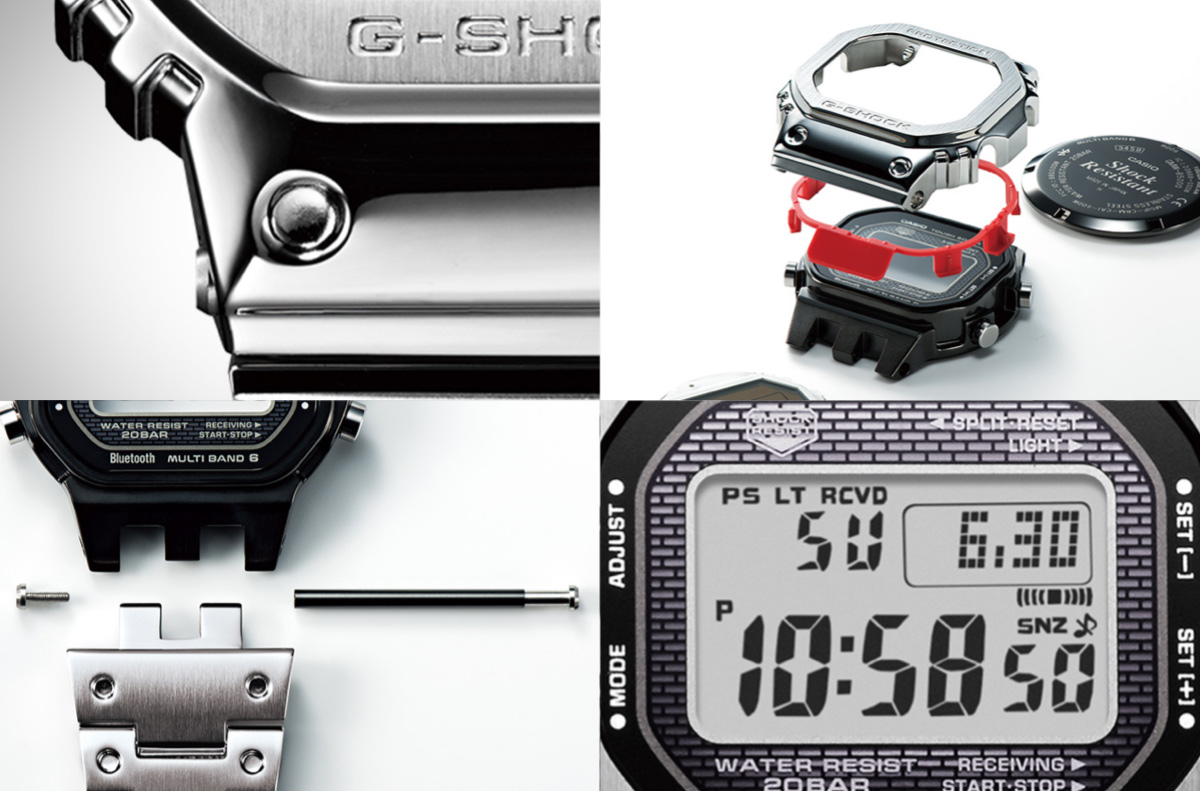

One must understand the difficulties related to crafting a G-Shock from all metal. The original G-Shock started its life as a large ball of resin with a timekeeping module stuck into it. This bouncy ball was, through the painstaking work of Kikuo Ibe and his colleagues, trimmed into the DW-5000C, the first G-Shock, launched in 1983. Still, the resin case itself had played a major role in keeping the timekeeping module from breaking upon impact. By turning that outer shield into metal – a rigid and unfriendly material that will pass on a whole lot more of the shocks and impacts than its resin counterpart – the internals of the watch become less isolated and, therefore, more vulnerable. As such, the GMW-B 5000 D-1 and GMW-B 5000 TFG-9 feature a resin piece in between the metal outer shield and the black inner module capsule – which is also crafted from metal. The top right picture in the collage above shows this tank-like inner core and its double-tier outer shields, as well as the black DLC-coated case-back that proudly says Shock Resistant on it.
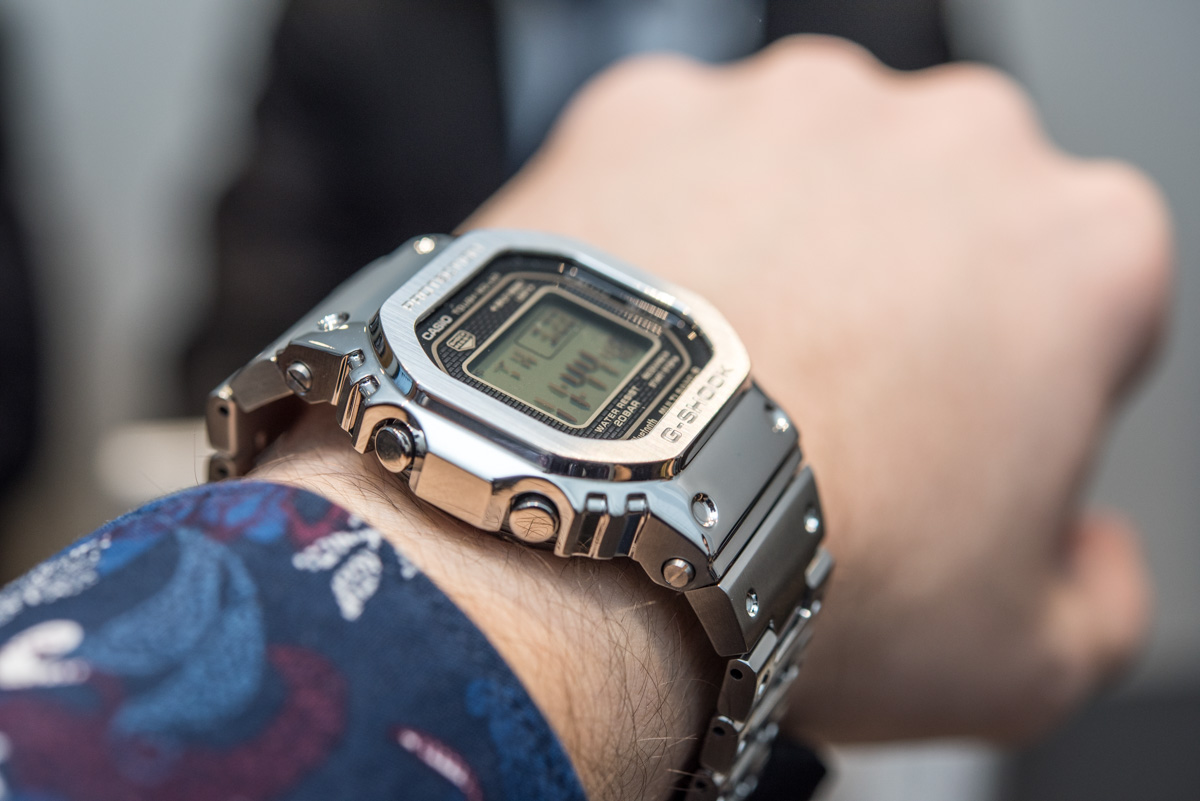
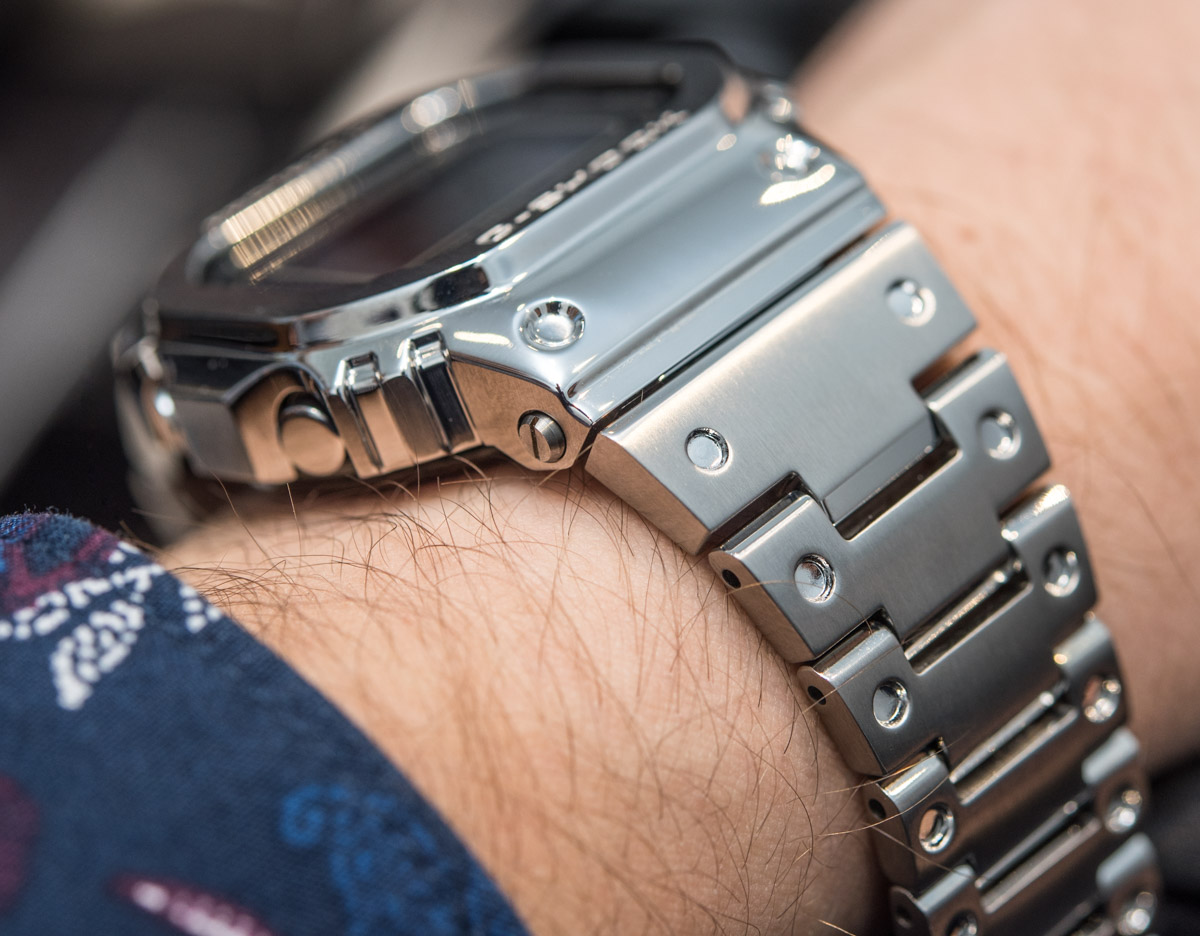
Both of these are also water-resistant to 200m, which is more than enough to guarantee reliable functioning under all wet circumstances. Your main concern when dropping into a pool or open water with one of these on should be not to sink… and this, neatly, leads us to wearability. Although I thought I had already been accustomed to wearing all-steel watches, I must say the G-Shock 5000-Series Full Metal pieces did shock me with their weight. Bearing in mind that the bracelets were not sized properly and the extra links added considerable weight to the overall watch, I was still surprised by the weight of either of these two novelties. They felt super heavy. The official weight figure is 167 grams or 5.9 oz, and you do feel that on the wrist. In truth, I wish they were a bit lighter, but my perception of their weight is the number one reason why I said I’d like to spend more time with one of these as a review – to determine how comfortable the weight and bracelet design actually are over a day’s wear.

